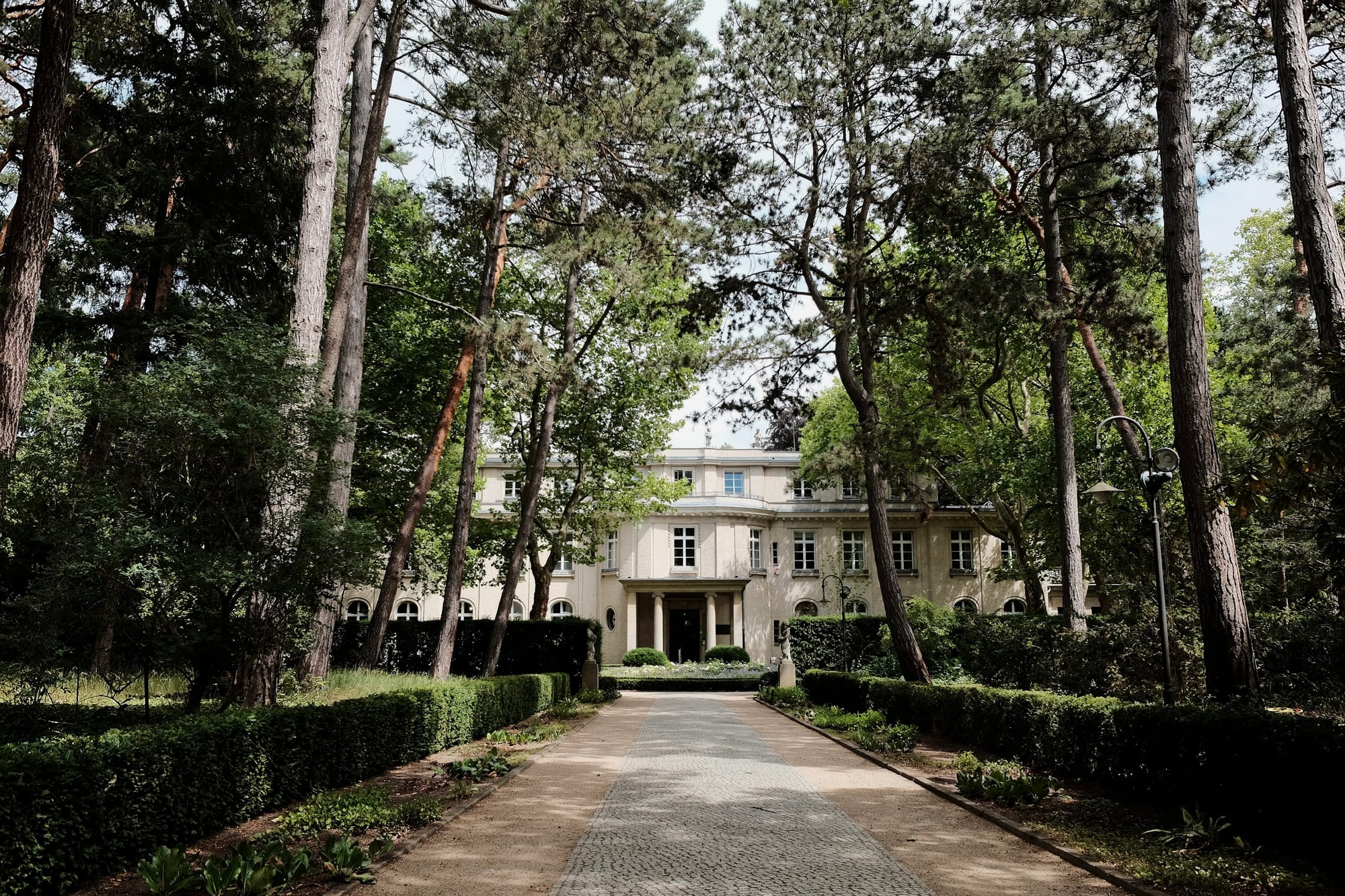A walk in Wannsee
After making my way past lakeshore villas and yacht clubs, I walked along a tree-lined driveway and into a house that lays bare the banality of evil.

The heat had subsided a little so I decided to forego the bus and walk from the railway station. I crossed the road to the lakeshore. Beneath clear skies, ferries kicked up low crystal wakes on the glassy water.
I was tempted to catch a boat ride and pass time in the sun watching the slow editing of the landscape. But I’d come to see a place that lay further on, somewhere in the shadows of the lakeshore: the House of the Wannsee Conference.
On 20 January 1942, fifteen high-ranking representatives of the SS, the Nazi Party and various ministries gathered at a villa in Wannsee. They were there to discuss and coordinate the deportation and murder of the Jews of Europe.
I’d studied the Wannsee Conference at school but, devoid of personal stories, the documents had refused to come to life for me. And, sat in a Midlands classroom, it had been impossible to picture the sort of place where such a thing could happen.
Decades later, there were few clues in my walk from the station – just streets lined with expensive houses and sailing clubs. When I reached the villa, I almost missed it. Set back from the road, the genteel white building exudes an anonymous calm. It was midweek and there were few other visitors around.
With the grounds to myself, I stopped to photograph the neat gardens leading down to the front door. I checked the image on the camera's screen. The shadows from the large trees had made the photo a little dark. I adjusted the exposure and tried again. Satisfied, I continued to the entrance.
Inside, information boards explained in even tones the documents from the meeting convened to enact the 'final solution'. Euphemisms like this are one of the most chilling things about the conference. Attendees talked about crimes against humanity in the same way a business would discuss a new sales strategy or recruitment campaign.
Of plans to work people to death in forced labour camps, they said that 'a large portion will undoubtedly drop out through natural reduction'. And they noted that those who do not 'drop out' would need 'suitable treatment'. Meaning of course, they must be murdered.
The mundanity of the language brought to mind a phrase coined by philosopher and political thinker Hannah Arendt: 'the banality of evil'. She used it to describe one of the key figures at the conference, Adolf Eichmann, who defended himself at his war crimes trial with the excuse that he was just following orders.
Arendt argues that Eichmann wasn't just following orders, but neither was he a fanatic or a sociopath. Instead, he was driven to dreadful crimes simply by professional ambition and a willingness not to think about his actions. It's a sobering thought, given how many people I've met who share those characteristics.
Needing to process all that I'd read, I went outside to the gardens behind the villa. They stretch down peacefully to the waters, inviting contemplation. But that is a relatively recent transformation – for over 35 years from 1952, the grounds were filled with the sounds of play because the building served as a Schullandheim (school camp).
In a thickly wooded area I came across a haunting sound installation. It imagines children from the school meeting Joseph Wulf, who long campaigned for the villa to become a research and documentation centre. His plans had met resistance and, despairing of ever seeing them come to fruition, he took his own life in 1974.
I stopped to listen to the final part of the sound installation. Singing to the children in Yiddish, Wulf tells a dark fairy tale of a heartbroken shepherd who, after losing his flock, drowns himself in the lake. The children - who once played here, unaware of their forefathers' sins – follow Wulf's voice into the water's depths.
The recording finished and I stood between the trees thinking about what I'd heard. Wulf didn't live to see the impact the House of the Wannsee Conference had on me, or on the thousands of others who have visited since it opened in 1992. That seemed like a final injustice on top of all the crimes perpetrated here.
I caught the bus back to the station and then the S-Bahn into central Berlin. I'd walk some more tomorrow but for today I was done. History has rarely felt as raw.

